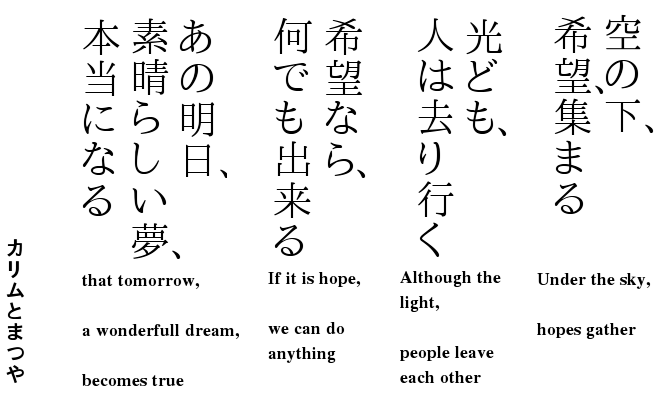Home »
Articles »
HAIKU: Japanese Form of Poetry in English, Hindi and Sanskrit
HAIKU: Japanese Form of Poetry in English, Hindi and Sanskrit
by Dr. Rakesh Ravi
A Critical Evaluation of popularity of this form of poetry by Dr. Rakesh Ravi
Introduction: Haiku is a poetic form of recent origin from Japan. It is said when America destroyed Hiroshima during the World War II, the devastation shocked common people so greatly that they gave expression to their suppressed feelings through a modern simple form of poetry called Haiku. But scholars claim that it developed in the 17th century and it has to do nothing with the World War. It is an epigrammatic Japanese verse form of three short lines.

Origin: Japanese, contracted form of haikai no ku ‘light verse.' But now it is not a light verse but a poem in three lines of 5, 7 and 5 syllables, often incorporating a word or phrase that symbolizes one of the seasons. English verse in imitation of this is called with the same name haiku or haikus in plural.
Structure: Haiku is a type of very short Japanese poem. The Japanese poem has three lines of 5, 7 and 5 syllables. It has three parts, usually of 17 syllables, and often about a subject in nature. An imitation of this in another language is also called a Haiku. Now we have Haikus in Hindi, English and Sanskrit too.
Haiku in English, Hindi & Sanskrit: The Japanese form of three lines is followed in all language but the difference appears when Haiku is written in other languages. In English it has three lines of 5, 7 and 5 syllables. In Hindi it has three lines of five, seven, and five letters (akhharas). In Sanskrit also the Hindi pattern is followed.
Development of Haiku in English, Hindi & Sanskrit: India is a country of versatile genius. When English poets wrote Haiku, Indian poets also felt inspired to contribute Haiku in English. There are a number of Indian poets who contribute Haiku in English. They follow the stanza form of this tercet with this restriction that the opening line has 5 syllables, the middle has 7 syllables and the last one has 5 syllables. For example, the young Indian poet in English, Mr. Shashank Raghav has recently composed the following Haiku:
Have entertainment
Be happy and make others happy too
You are successful.
The spirit of a modern youth is well expressed in the above composition with this inspiring thought that there should be a sincere care for others' happiness too. When it is observed that you are happy and make others happy, the life is successful.
When Haiku become popular in the country, it got new dimensions with Hindi poets who wrote Haiku in Hindi with full perfection. They introduced the slight change in the structure of the poetic form that in place of syllables they counted letters and thus, Haiku came into existence in Hindi also. There is a long line of poets in Hindi who compose Haiku. The following Haiku in Hindi expresses romantic feelings of a lonely young man. The following lines are composed by Mr. Vaibhav Saxena, a young writer of Haiku:
Aaj ki raat
Udasi se bhari hai
Tum nahi ho.
(The night is very dull without you.)
It is a great achievement on the part of Smt. Ranjana Rashmi that she has composed Haiku in Sanskrit also. She expresses deep philosophy in her compositions. For example, in the following Haiku in Sanskrit, she asks eternal questions regarding the existence of the universe and replies the complex question within the three lines that it all is ambiguous and beyond human understanding.
Kasya Jagtam
Na tu aham na vayam
Asmakam asti.
(The world is neither mine, nor yours but it is of all.)
In another Haiku, she expresses immortality of love within simple words:
Vishwasam kuru
Aham tavaiv asmi
Aasit ch bhavet.
(Belive me, I am yours, ever in past and will be in future.)
Conclusion: Thus, the future of Haiku is bright in India. I hope more and more people would contribute to Haiku in Sanskrit, the oldest of all languages in the world.